This post may contain affiliate links. If you use these links to buy something we may earn a commission. Thanks.
Low-growing evergreen ground covers can replace lawns, fill in the cracks between stones, provide a year-round aesthetic, and more. Every option offers multiple functions for you, the landscape, and wildlife. To find the best fit for you, scour the details of each plant in this post.
All ground covers are good at protecting bare soil, helping build soil over time, and filling a space to suppress unwanted weeds.
Evergreens retain their foliage throughout the year. In temperate climates, evergreen plants are conifers. In tropical climates, evergreen plants have broad, more leathery leaves and retain their leaves, unlike deciduous plants.
Many fruiting ground covers are evergreen too, for more choices beyond this post, see: 19 Tasty Fruiting (Low-Growing) Ground Covers
Low-growing ground covers create aesthetically pleasing carpets of lush green and some of them tolerate light traffic while others produce food. They can be beautiful in open empty spaces, fill in the gaps between taller growing shrubs or stepping stones, and serve as living mulch under trees.
Disclaimer: Food Forest Living or its authors are not responsible for what you choose to consume. Do your own research before consuming anything “edible” or “medicinal.” Before planting any of these options check with your local invasive plant council or regional extension office for guidance on plants that may be invasive in your area.
Related: 22 Evergreen Ground Covers for Shade
Moss Phlox (Phlox subulata)
Zones 4-9
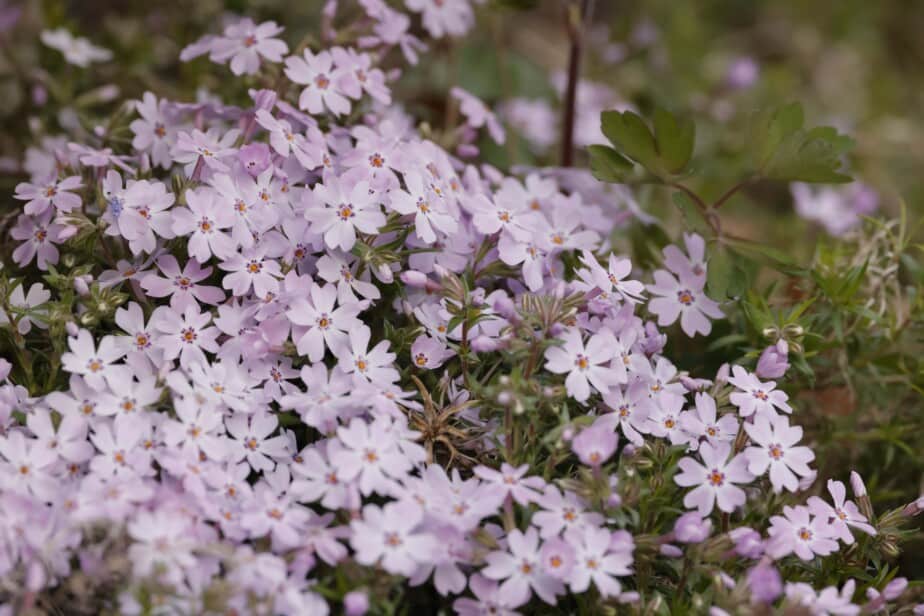
Moss phlox is a popular evergreen ground cover since it’s long-lived and forms a dense flowering carpet of color. It grows low and only to about 4 inches tall with over 1 foot of spread.
Flowers come in a variety of colors such as pink, purple, white, and blue. Native to the USA, moss phlox flowers attract native pollinators.
The fine root system of this ground cover makes it an excellent choice for managing erosion on slopes.
Creeping Broom (Genista pilosa procumbens)
Zones 6-8
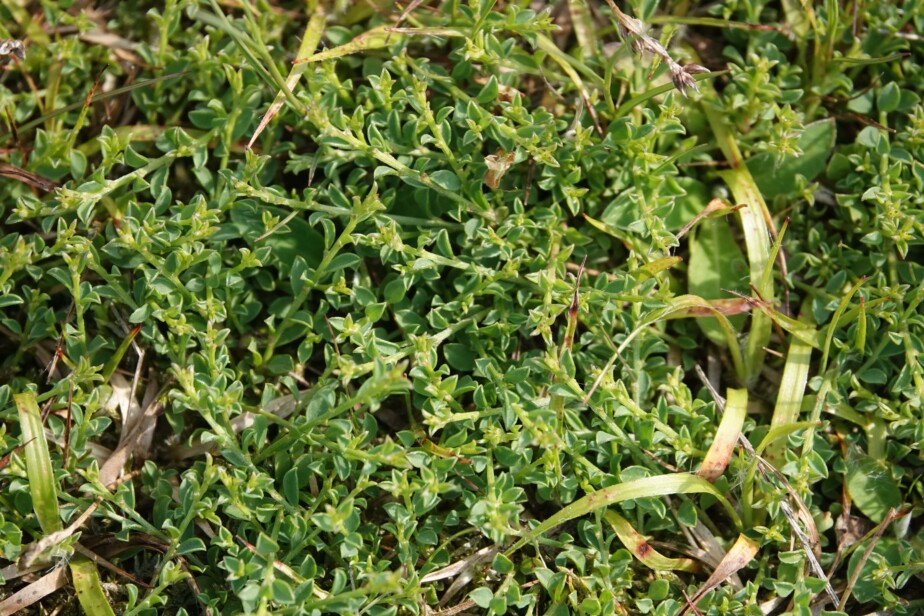
Creeping broom keeps under a 4-inch height and is a nitrogen-fixing evergreen ground cover. It blooms yellow flowers from late spring to summer. It’s drought tolerant and likes poor, loose, and well-drained soils with partial shade or full sun situations.
Other types of this plant exist, but this is the lowest-growing variety.
Coprosma brunnea
Zones 7-10
Another evergreen ground cover that keeps to about 4 inches in height but is native to New Zealand. It has edible white- or blue-colored fruit and apparently, the seed makes a good coffee substitute.
Squaw Carpet (Ceanothus prostratus)
Zones 6-9
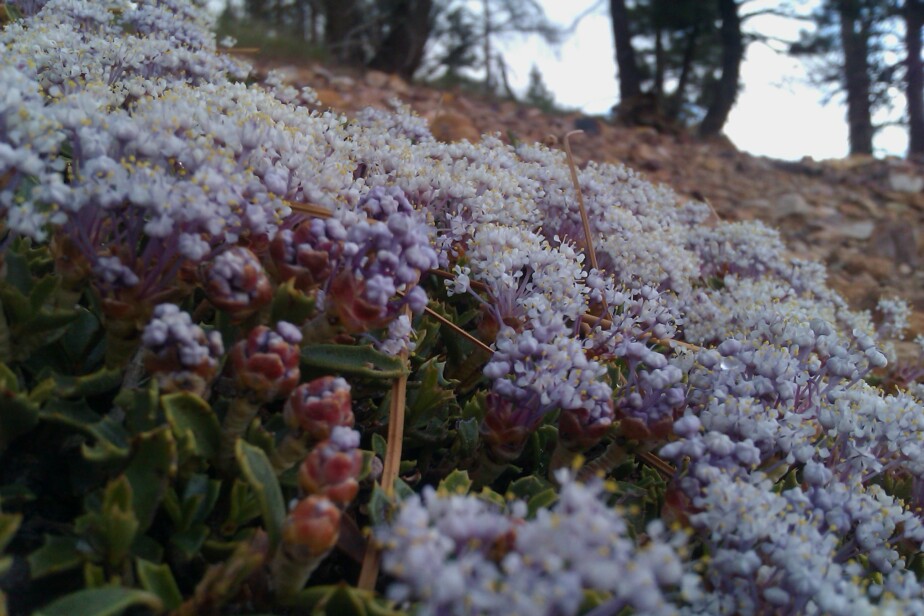
This gorgeous 4-inch tall evergreen ground cover is used in food forests as a nitrogen fixer. Easily propagated and terminated to reap the rewards of nitrogen fixation. (if you’d like more discussion on that, leave a comment:)
It’s often used to hold together slopes as it has a fast growth rate, has shallow roots, and prefers the warmth of the sun and dry or moist soil.
As stems grow they fall to the ground and root on their way. This gorgeous living carpet is native to Western North America.
Hottentot Fig (Carpobrotus acinaciformis)
Zones 8-11
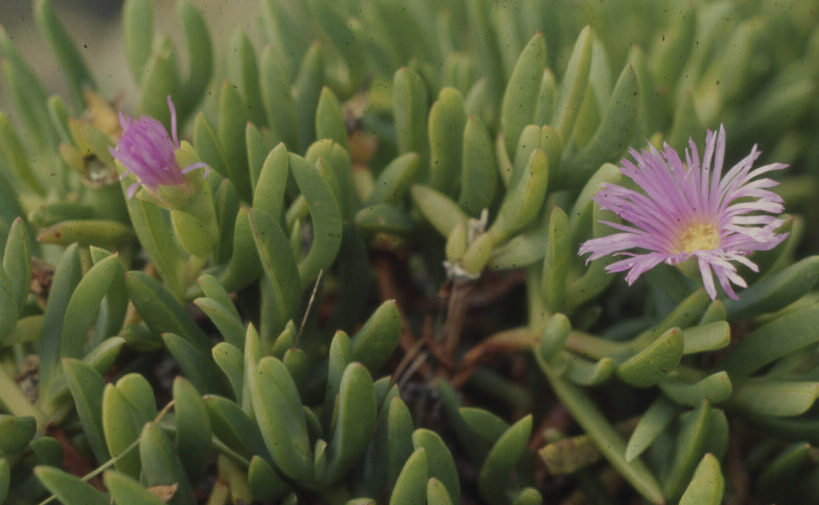
This article was originally published on foodforestliving.com. If it is now published on any other site, it was done without permission from the copyright owner.
Hottentot figs have an interesting texture and taste. A slightly salty, soft, juicy succulent foliage (foliage doesn’t even feel like the right word). The flowers are very vibrant. Like more perennials, you can get away with growing them as annuals if they’re quick to mature from seed!
We grew these guys one year in zones 5 because we were interested in their flavor and practicality as edible. If you love making shredded salads interesting then I do recommend growing these even outside the zones they’re hardy. Just grow a good amount of it! Some may find them weird or unenjoyable.
They are evergreen and perennial in zones 8-11. Any other zones, like most of these evergreen ground covers, will not be evergreen to where they are not hardy!
They also stay around 4 inches in height and are a cute sight to see.
A good choice for stabilizing slopes as hottentot is succulent they prefer dry loose soils. They grow new shoots and root easily to spread.
Wild Ginger (Asarum caudatum)
Zoned 6-10
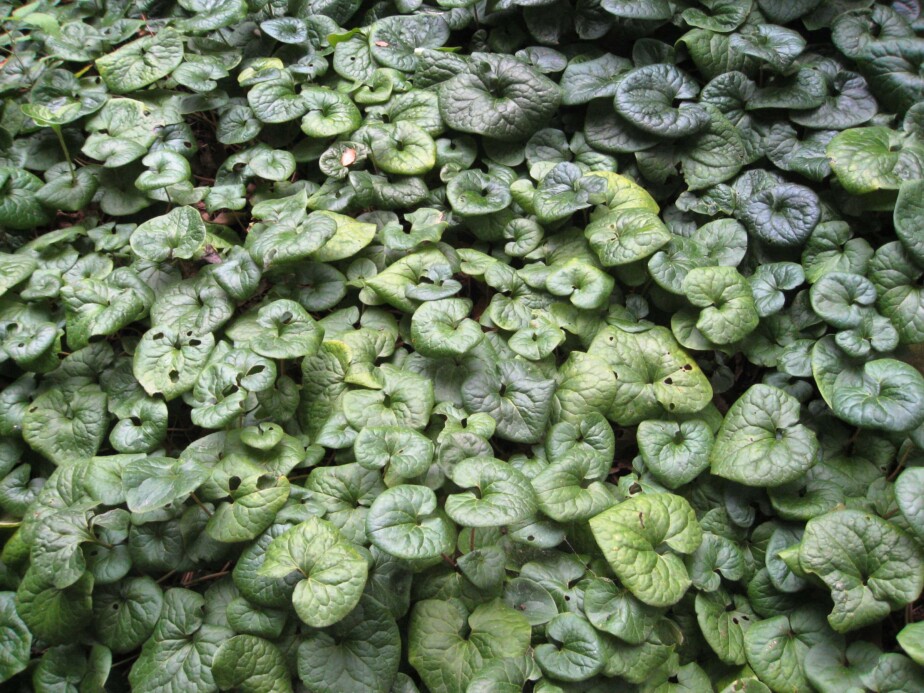
True to my word about low-growing ground covers, yet again another 4-inch tall lush of green. An unwalkable carpet of heart shape foliage with edible roots as a substitute for ‘legit ginger.’
The leaves are said to make a good tea. Before using parts of this plant for consumption, dive into the medicinal qualities as well.
This ginger is a fast-growing evergreen that thrives in shady positions. Full shade or partial shade with moist soil is ideal.
Mottled Wild Ginger (Asarum shuttleworthii)
Zones 5-9
A picture and more information about this wild ginger here: 11 Best Zone 5 Ground Covers for Shade (with Photos)
Pine mat manzanita (Arctostaphylos nevadensis)
Zones 5-9
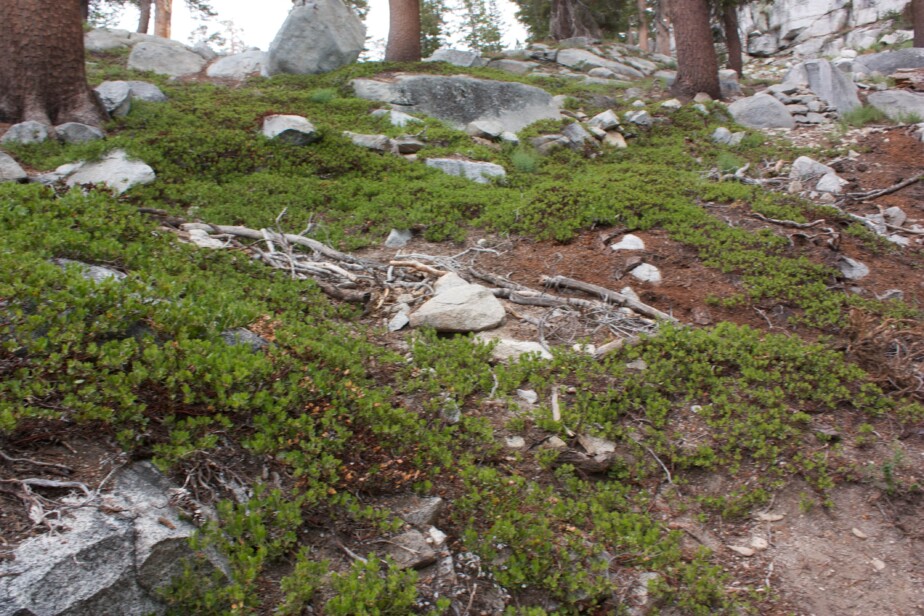
A dense carpet-forming broadleaf evergreen with white edible berries. A commonly found medicinal ground cover native to Pacific North America.
Stays around 4 inches in height with a medium growth rate. Part shade is suitable but produces more fruit in full sun and moist soil.
Bearberry (Arctostaphylos uva-ursi)
Zones 4-8
Similar to the plant above, useful and tasty in different ways, and just as dense and evergreen, but less cushiony and carpety!
For a photo of A. uva-ursi and more details, see: 18 Ground Cover Herbs for Full Shade & Part Shade. (And maybe you’ll find another ground cover ginger substitute for zones 3-9!)
Catsfoot (Antennaria dioica)
Zones 4-8
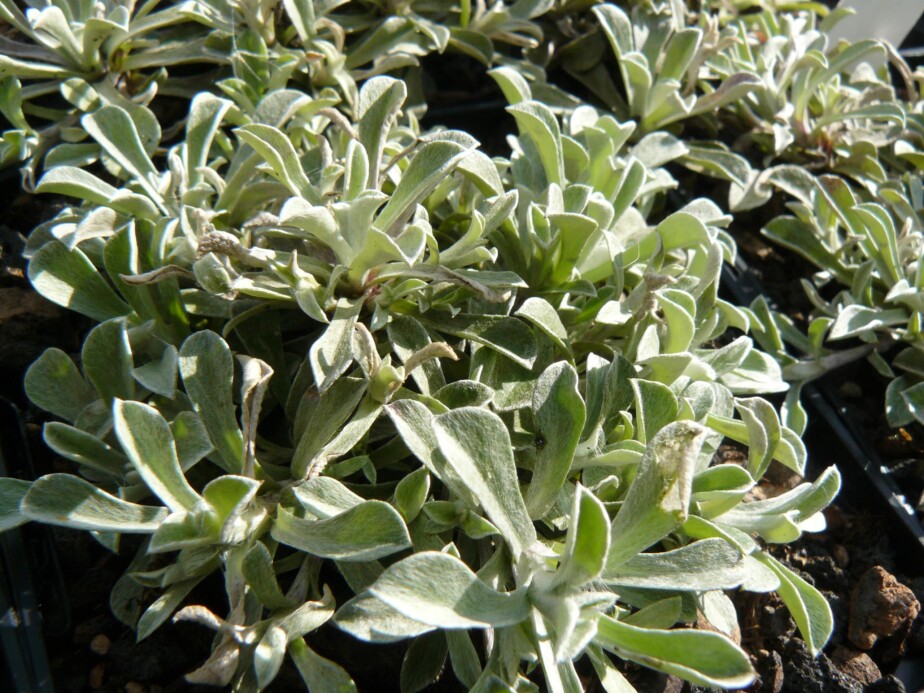
A slow-spreading and low-growing ground cover for sunny areas. Dry soils and full sun with trailing and rooting make it good for soil stabilization. The only downfall is it’ll take a while. For flatter areas, pussytoes can handle very light foot traffic.
An evergreen herb with more medicinal qualities than everyday eating. I thought including a bright fuzzy foliage ground cover would be a distinct option you might want to consider for your landscape.
This creeper is only 2-3 inches tall, and with flowers, 4 inches.
Mountain Avens (Dryas octopetala)
Zones 3-6
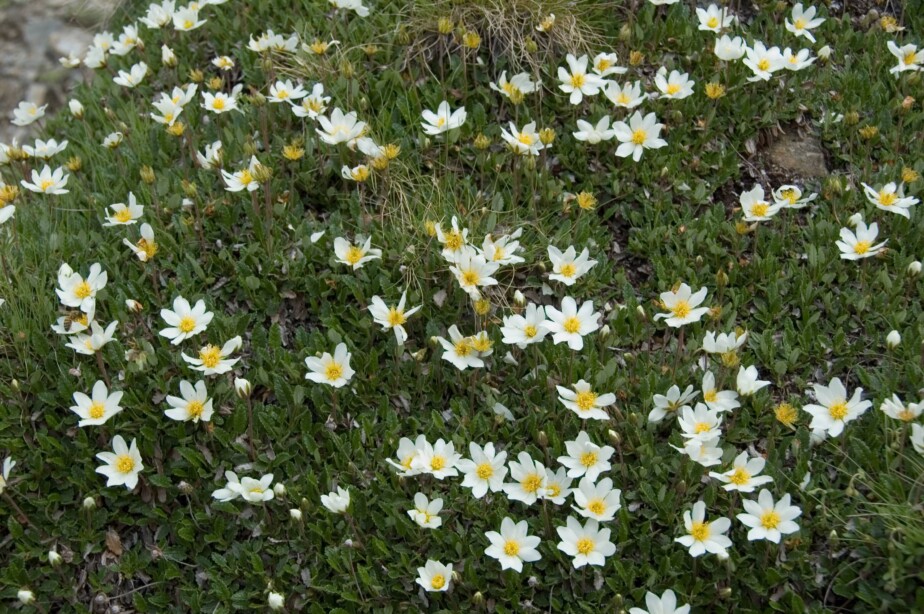
A lush evergreen ground cover, with beautiful flowers, and fixes nitrogen. With plenty of fine roots, a desire for full sun, and a preference for well-drained moist or dryish soils, this low-grower succeeds on slopes, in rock gardens, and in sand.
Native to Europe and 4 inches in height. Attracts plenty of pollinators.
Mountain Snowberry (Gaultheria depressa)
Zones 8-11
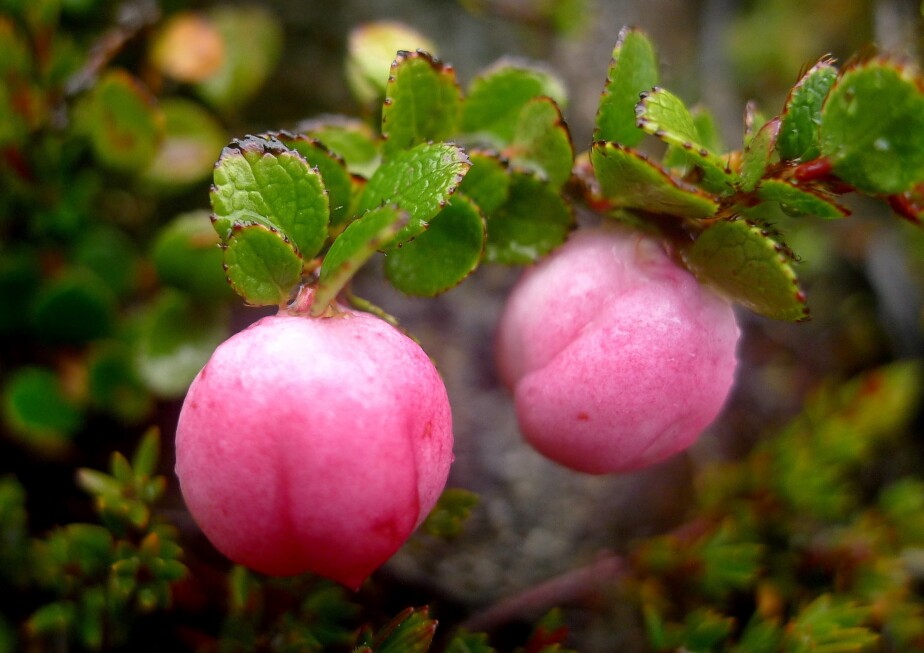
Native to Australia and New Zealand, some alternatives are below.
This warm-climate evergreen is used as a ground cover in full sun or semi-shaded areas. With a 4-inch height and delectably sweet berries, it’s a useful low-growing carpet.
Creeping Snowberry (Gaultheria japonica & hispidula)
Zones 5-9
Snowberries leave options for everyone as G. japonica is native to Asia, and G. hispidula is native to North America.
These creepers have the cutest little foliage! See photos and descriptions here: 19 Tasty Fruiting (Low-Growing) Ground Covers.
Mayflower (Epigaea repens)
Zones 3-8

A highly useful North American native evergreen with flower clusters as a first sign of spring. A 4-inch low-growing carpet is formed in moist soils and partial shade.
While Mayflowers are edible, medicinal, fragrant, and nice to look at, they are slow growers and protected from over-harvesting in native areas.
Sedums
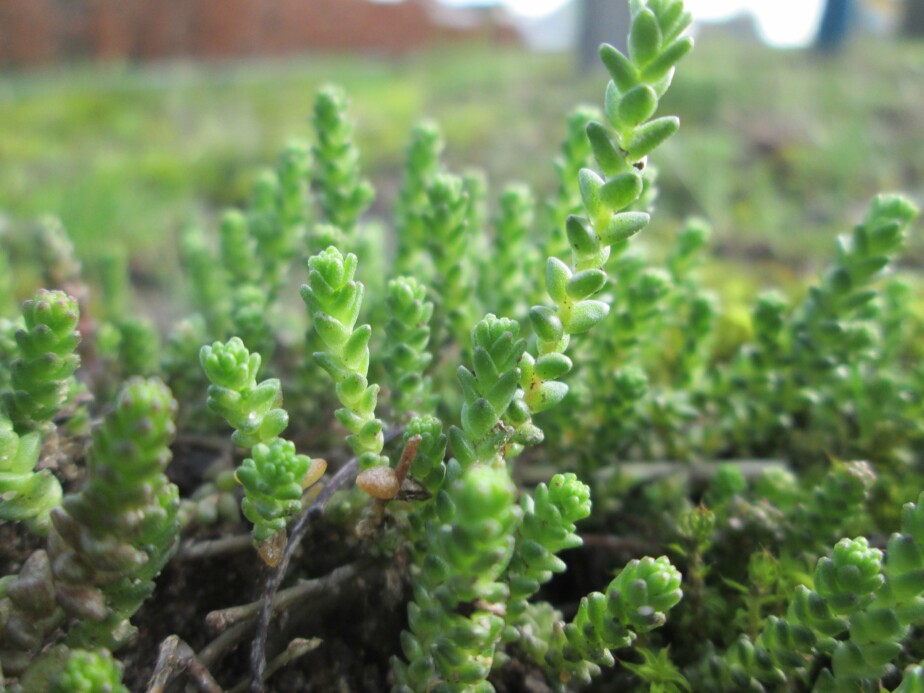
Gold moss stone crop (Sedum acre)
- Zones 4-9
- Fast Growing
- 4-inch height
- Yellow flowers
White stonecrop (Sedum album)
- Zones 6-8
- Medium growth rate
- 4-inch height
- Small white flowers
Orange stonecrop (Sedum kamtschaticum)
- Zones 4-10
- Medium growth rate
- 4-inch height
- Yellow/orangy flowers
Yellow stonecrop (Sedum rupestre)
- Zones 6-9
- Medium growth rate
- 4-inch height
- Small yellow flowers
Broadleaf stonecrop (Sedum spathulifolium)
- Zones 6-10
- Medium growth rate
- 4-6 inch height
- Yellow flowers, interesting foliage
Caucaisian stonecrop (Sedum spurium)
- Zones 6-9
- Fast-growing, invasive
- 8-inch height
- Pink flowers
Oregon stonecrop (Sedum oreganum)
- Zones 5-9
- Medium growth rate
- 8-inch height
- Yellow flowers
Algerian Tea (Paronychia argentea)
Zones 6-9
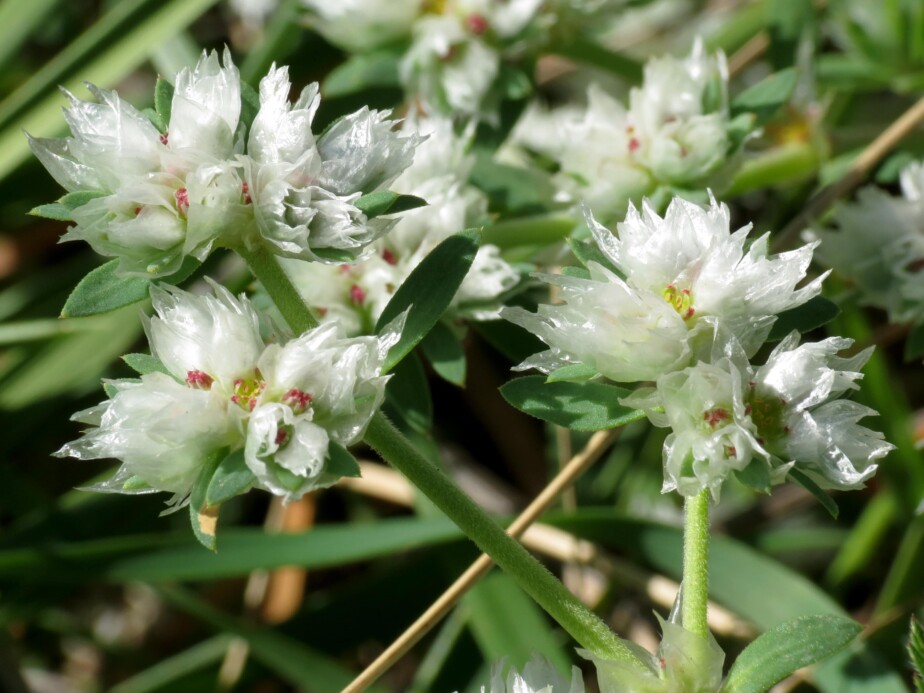
A full sun warm-loving evergreen perennial with a height of 4 inches. Grow this in sandy dry or moist soils. White flowers are like thin paper film and leaves can be used for tea. Native to Europe.
Ribbon Lily (Reineckia carnea)
Zones 6-9
A very easy fast-growing ground cover that looks like fountaining grass. Stays around 4-8 inches in height and prefers dry soil in shade, and part shade or moist soil in full sun. It’s an evergreen native to Asia and very low maintenance.
Emerald Carpet Raspberry (Rubus rolfei)
Zones 7-9
I just discovered this cute creeping evergreen raspberry! I wish it was hardy to our zone, if it is for you, here are plenty of details and images.
Moss campion (Silene acaulis)
Zones 3-5
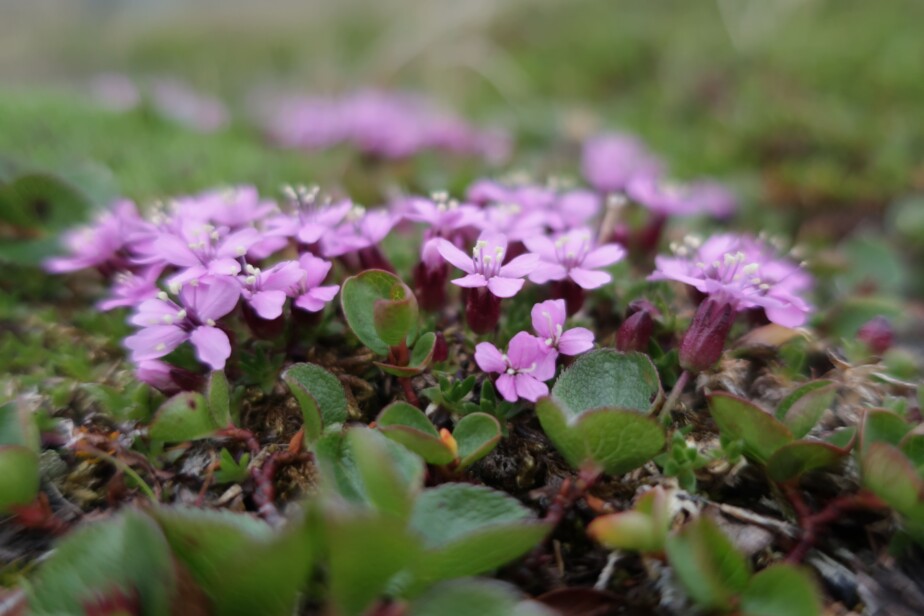
Another low grower around 2-4 inches tall. This cute evergreen ground cover is native to North America, Asia, and Europe. Moss Campion grows in light soils like sand, and full sun positions. Perfect for rock gardens or between stepping stones.
The lavender-pink flowers invite butterflies and other pollinators to your site.
White clover (Trifolium repens)
Zones 4-8
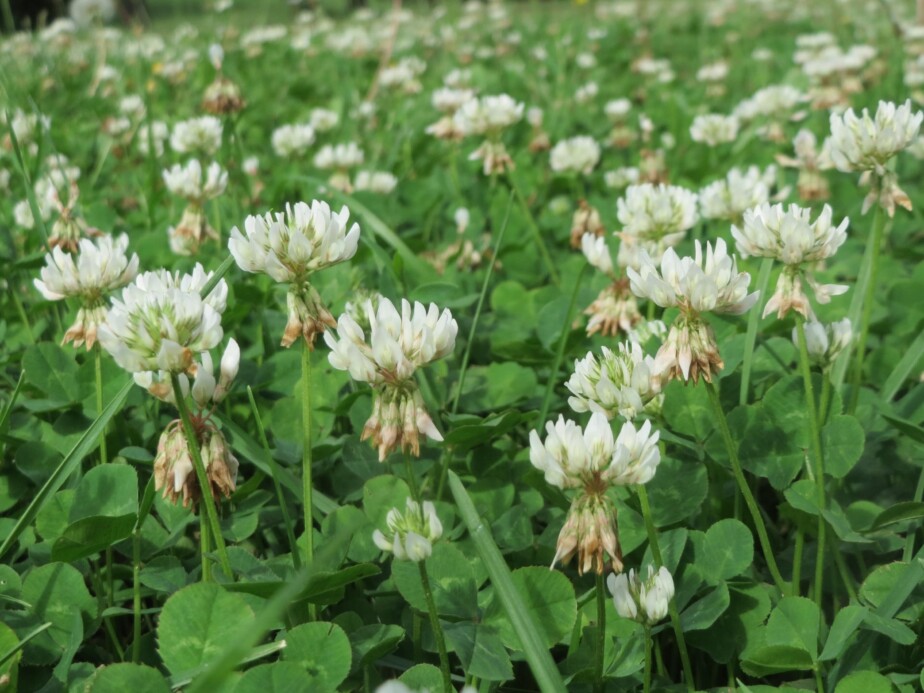
White clover is a type of clover that doesn’t grow very tall. Our stays around 4 inches in height and makes the perfect low maintenance ground cover. White clover is also considered an evergreen. The flowers we use in teas and also save most of them for the bees!
Moist soil and full sun are the best position for this clover. Being in the legume family, this plant is also nitrogen fixer, we chop and drop it for soil building and find it makes a great base for starting a food forest.
Labrador Violet (Viola labradorica) & Sweet Violet (Viola odorata)
Labrador violet grows in zones 3-8 and sweet violet grows in zones 4-8.
For more details about these cute evergreen ground covers, see: 12 Low-Growing (Low Maintenance) Edible Ground Covers
Recent Posts
There’s no shortage of full-sun ground covers for zone 4 climates! Each plant in this list can withstand the frigid temperatures and also enjoy the hot sun in summer. Full sun means that a plant...
There's no shortage of full sun ground covers, not even in zone 3! Zone 3 climates offer hot but short-lived summers and very cold winters. So each plant in this list can withstand the frigid...
